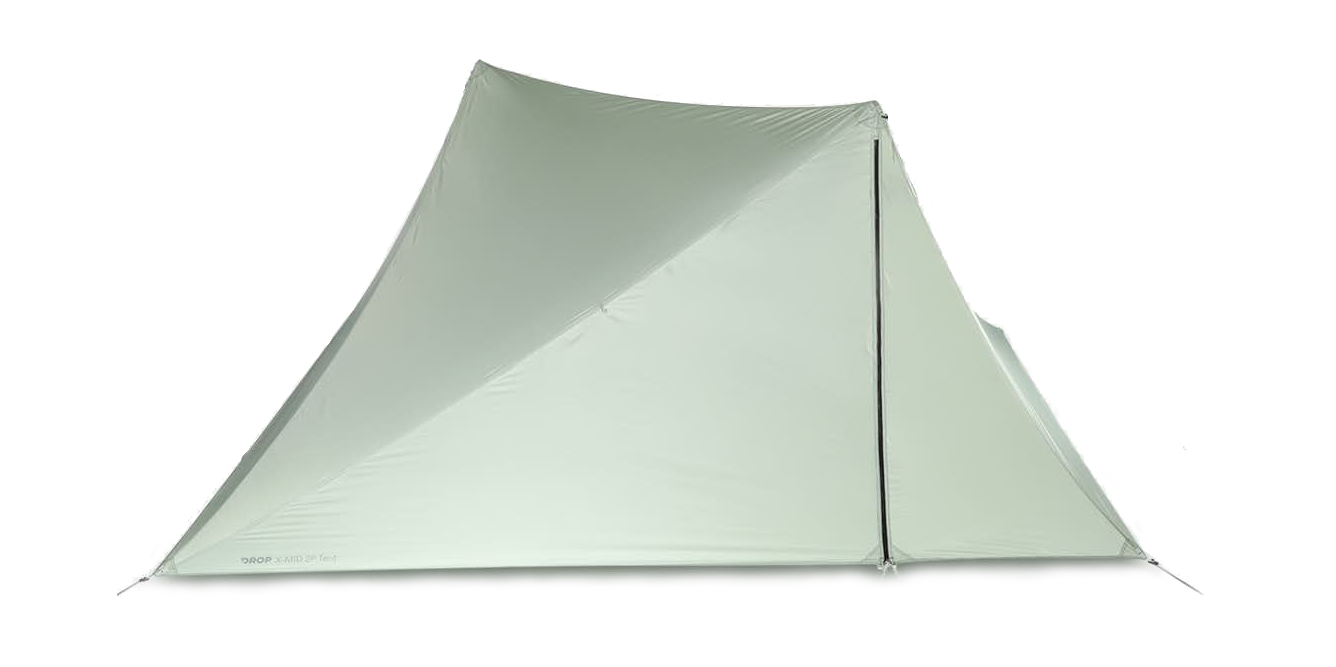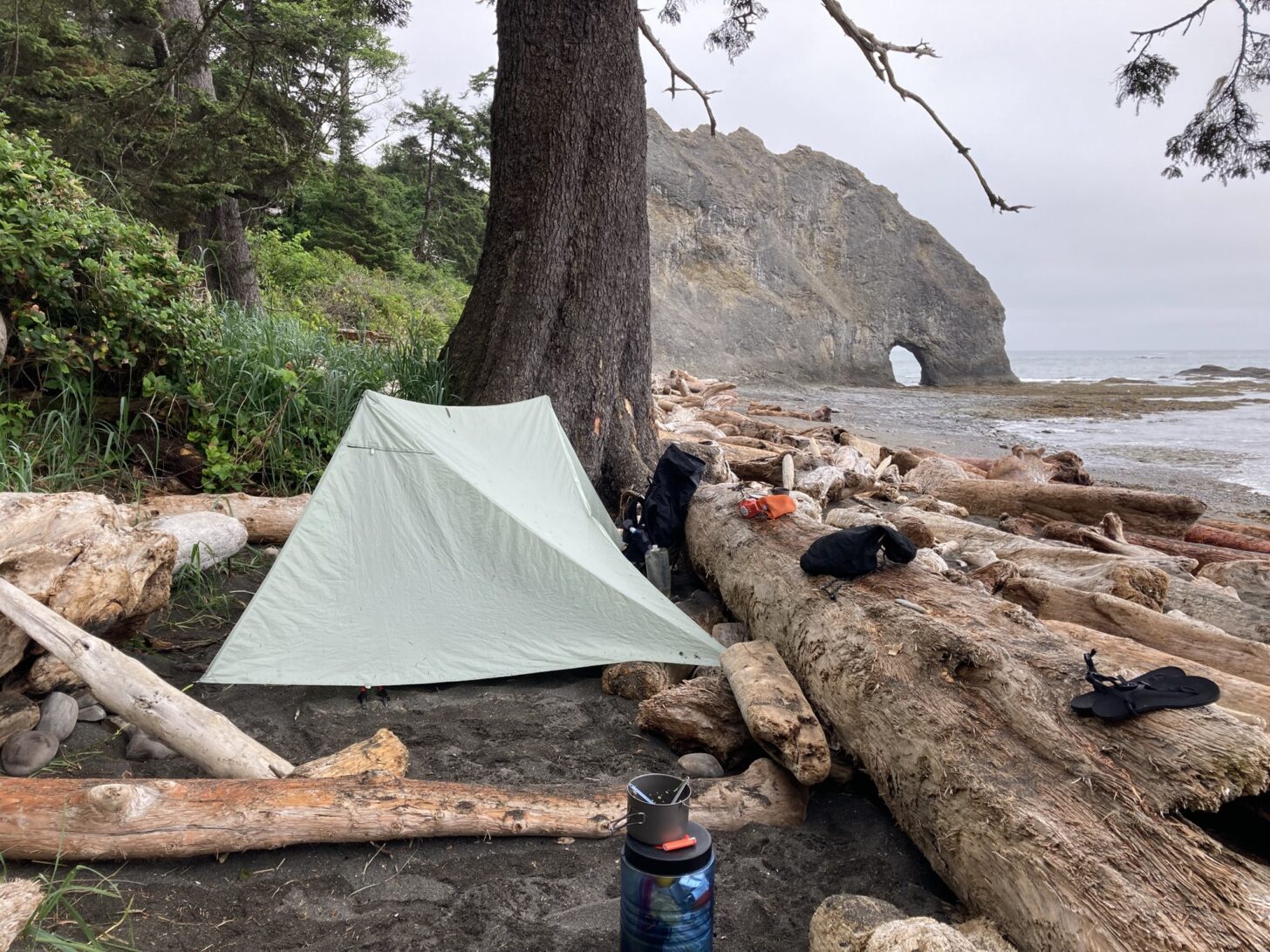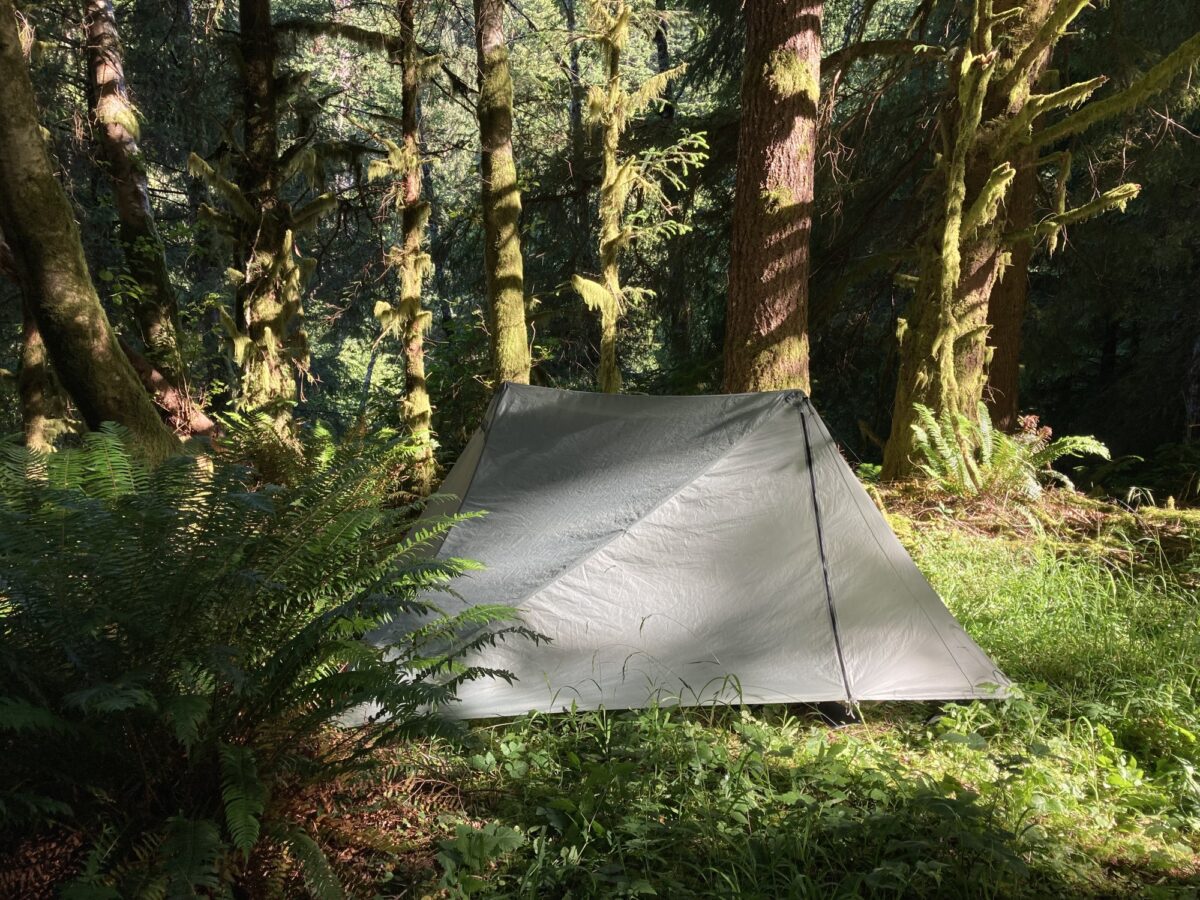Introduction
The Durston X-Mid 2P Tent has rapidly established a prominent place in the world of ultralight backpacking tents. Such apparent hype often makes me skeptical, so I was eager for the opportunity to find out firsthand if it was any good.

Having used other two-pole tents such as the Six Moon Designs Haven Bundle and the Seek Outside Eolus, and seen others in action such as the ZPacks Triplex and the TarpTent Notch, it was a little difficult for me to imagine how the X-Mid could be different or better than these. I understood the offset pole design and its potential benefits, but what never really clicked until I set it up was the benefit of the rectangular-shaped base. In my opinion, this rectangular shape and the stability it provides is what really sets the Durston X-Mid 2P Tent apart from others in the dual-pole category.

Highlights
- The rectangular base gives the tent stability similar to traditional pyramid tents.
- The combination of offset pole design and angled inner tent creates large, usable vestibules.
- Large overall size means my sleeping bag never touches the head or foot of the tent.
- Pockets for organization.
- Vents for condensation management.
- Subtle color is unobtrusive in the wilderness.
- Catenary cut along with rectangular base gives it a tight pitch.
- Overall high-quality construction.
- Reasonably priced at $300.
Review Context
The dual trekking pole tent category is arguably one of the most saturated categories in the world of ultralight backpacking gear. The well-known ZPacks Duplex holds a leading role with its simple single-wall design and impressively low weight, but there are countless other options making it difficult for prospective buyers to wade through them all. I have tested the Six Moon Designs Haven Bundle and the Seek Outside Eolus which both exemplify tents in this flooded market well, so I will be comparing the X-Mid to these often.
The Haven Bundle, in particular, is a perfect example of the unimproved two-pole design: the six-sided geometry is just wonky enough to make a tight pitch difficult, there is no catenary cut, the poles are in the middle of the vestibules, the doorway only opens on one side of the pole, and the vestibules are small. The Durston X-Mid 2P stands in stark contrast to this and other similar tents because it is large, it has offset poles, a rectangular base, and usable vestibules.

Because the Durston X-Mid 2P has a rectangular shape with each of the four corners being very close to 90°, it solves the stability and ease of use problems of many other two-pole shelters. I have always been a big fan of rectangular footprint pyramid tents because they are extremely easy to pitch. If all four corners have close to right angles, the pitch will be taut. A rectangular shape tensions the perimeter, stabilizing the entire structure and allowing it to perform well in wind. The Durston X-Mid 2P takes this concept and makes it more livable by turning the traditional pyramid into a two-pole rather than one-pole shelter.
This is a Performance Review based on using the shelter in a variety of environments on several multi-day backpacking trips. Read more about our types of reviews here.
Features
- The rectangular shape allows the tent to be pitched with only four stakes.
- You can pitch the fly first in the rain, allowing the inner to stay dry.
- Offset twin pole structure provides generous headroom and living space by maximizing the distance between the two poles.
- Double-wall design to manage condensation.
- Two doors with vestibules.
- Protected doorways can be left open in light rain.
- Doorways are large and not blocked by trekking poles.
- Polyester fabric doesn’t sag like nylon.
- Vents to manage condensation.
- Good wind performance via even load distribution on the stakes, optional peak guylines, and additional hem stakeout points.
- Four interior storage pockets.
- Fly extends to the ground to block drafts and can also be raised for ventilation.
- Packs down short enough to store horizontally in a pack.
- Fly and inner can pitch separately.
- Fully seam taped.
- Non-slippery floor (PEU coating on the inside surface).
- Premium materials and hardware (e.g., YKK AquaGuard Zippers).
Specifications
- Fly: 21 oz / 600 g
- Inner: 15 oz / 425 g
- Stuff sack: 0.5 oz / 14 g
- Stake sack: 0.2 oz / 4 g
- Stakes: 4 ti hooks 0.28 oz / 8 g apiece, 4 ti V stakes 0.42 oz / 12 g apiece
- Tent (fly + inner): 36 oz / 1025 g
- Typical setup: 39 oz / 1105 g (tent, stuff sacks, 6 stakes)
- Complete package: 40 oz / 1135 g (tent, stuff sacks, 8 stakes)
Materials
- 20D 420 thread-count 100-percent polyester in desert sage color
- 2500 mm sil/PEU coating
- Peak reinforced with 210d black nylon
- YKK #5 AquaGuard (water-resistant) zippers (fly)
- YKK #3 zippers (inner tent)
- Four titanium shepherds hook stakes and four titanium V stakes
- Made in Vietnam (same factory as MSR)
Dimensions
- Fly: 88 x 102 in / 224 x 259 cm
- Fly area: 62 sq ft / 5.8 sq m
- Fly peak height: 47 in / 119 cm
- Inner peak height: 44 in / 114 cm
- Floor width: 50 in / 127 cm
- Floor length: 92 in / 233 cm
- Floor area: 32 sq ft / 3.0 sq m
- Vestibule area: 24 sq ft (12 sq ft x 2) / 2.2 sq m (1.1 sq m x 2)
- Packed size: 12 x 6.5 in / 30 x 17 cm
Performance Assessment
Description of Field Testing
I’ve been using this tent on almost every trip since May. I’ve used it both with a partner and alone. I have slept in it in many different environments including the High Uintas in northern Utah, the Central Cascades, the Olympic Coast, Grand Staircase Escalante, and the Wind River Range. The weather was pretty variable throughout my testing period. I have set it up both fly-only and inner-only, but most of my testing was in double-wall mode.

Environmental Conditions
- Desert: buggy but there was no rain
- Rainforest: buggy but no rain
- Alpine: buggy, windy, high humidity, and a little rain
- Beach: bugs, rain, and wind
How Many User-Days?
- About 25
List of Performance Criteria
I hope the following criteria will help the user differentiate between this tent and others in the same category.
- Rectangular Shape
- Pitching
- Livability
- Storm worthiness
- Fabric
- Durability
- Weight
- Finish quality/aesthetics
- Price
Rectangular Shape
The Durston X-Mid 2P is not the first tent to use two trekking (or otherwise straight) poles to attempt to increase livable space in a pyramid-like shelter. The Black Diamond Beta Light 2P, for example, has been around for a while, but its poles are right in the middle of the sleeping area. As far as I can tell, there are only two tents that utilize a rectangular footprint with this bi-pole design: the Sierra Designs High Route 1 and the Durston Gear X-Mid. The Seek Outside Silex appears to be close to a rectangle – possibly more of a diamond – but I haven’t seen one in person so I can’t say for sure.
Member Exclusive
A Premium or Unlimited Membership* is required to view the rest of this article.
* A Basic Membership is required to view Member Q&A events




Home › Forums › Durston X-Mid 2P Review